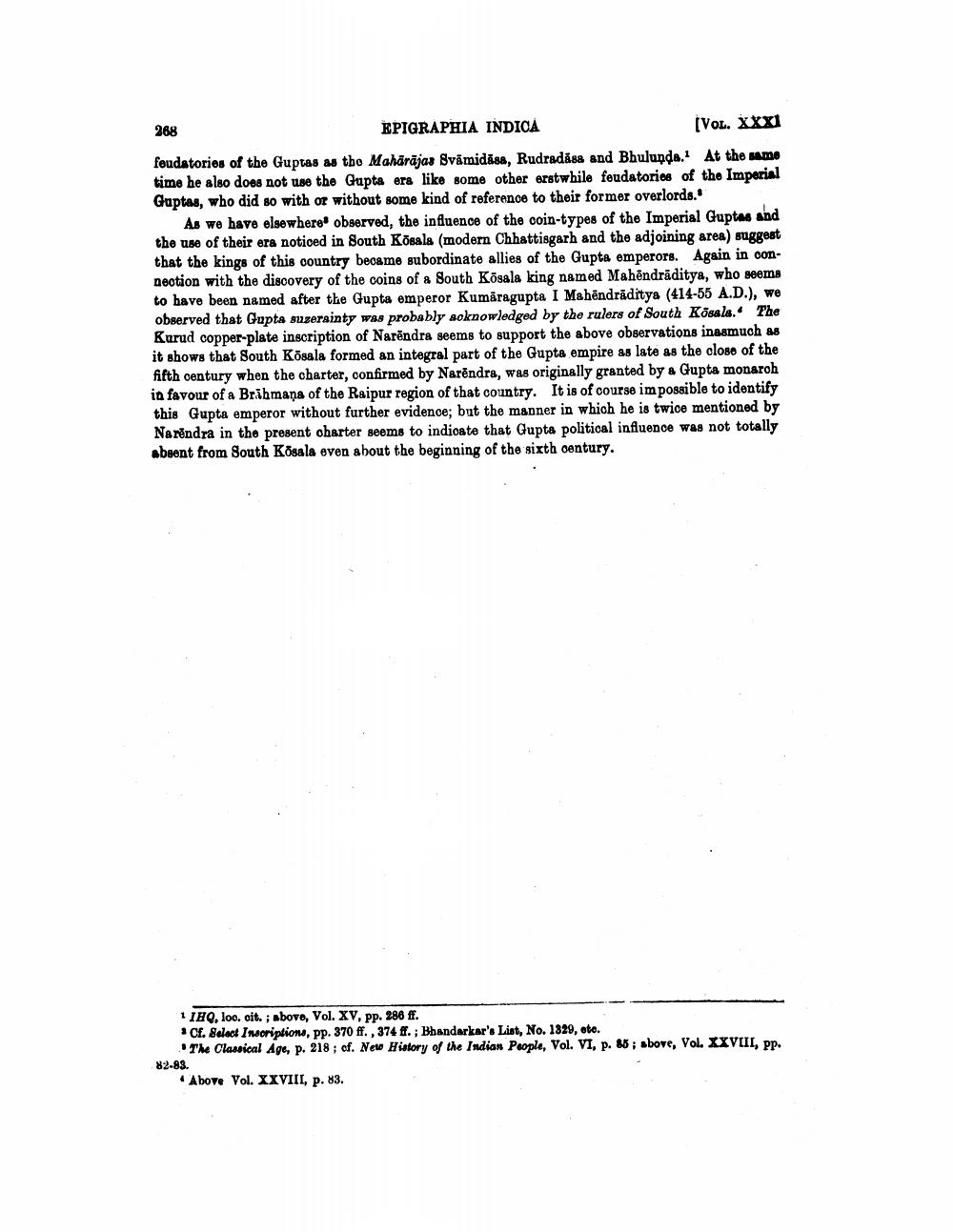________________
268
EPIGRAPHIA INDICA
(VOL. XXX1
feudatories of the Guptas as tho Mahārājas Svāmidăsa, Rudradása and Bhulunde. At the samo time he also does not use the Gupta era like some other erstwhile feudatories of the Imperial Guptas, who did 80 with or without some kind of reference to their former overlords.
As we have elsewhere observed, the influence of the coin-types of the Imperial Guptas and the use of their era noticed in South Kosala (modern Chhattisgarh and the adjoining area) suggest that the kings of this country became subordinate allies of the Gupta emperors. Again in connection with the discovery of the coins of a South Kõsala king named Mahendrāditya, who seems to have been named after the Gupta emperor Kumāragupta I Mahēndrāditya (414-55 A.D.), we observed that Gupta suzerainty was probably acknowledged by the rulers of South Kosale. The Kurud copper-plate inscription of Narēndra seems to support the above observations inasmuch as it shows that South Kösala formed an integral part of the Gupta empire as late as the close of the fifth century when the charter, confirmed by Narendra, was originally granted by a Gupta monarch in favour of a Brahmana of the Raipur region of that country. It is of course impossible to identify this Gupta emperor without further evidence; but the manner in which he is twice mentioned by Narindra in the present oharter seems to indicate that Gupta political influence was not totally absent from South Kosala even about the beginning of the sixth century.
1 [HQ, loo. cit.; above, Vol. XV, pp. 286 ff. * Cf. Select Incriptions, pp. 370 ff., 374 ff.; Bhandarkar's List, No. 1829, oto.
The Classical Age, p. 218; cf. New History of the Indian People, Vol. VI. p. 85; sbove, Vol. XXVIII, pp. 82-83.
*Above Vol. XXVIII, p. 83.




